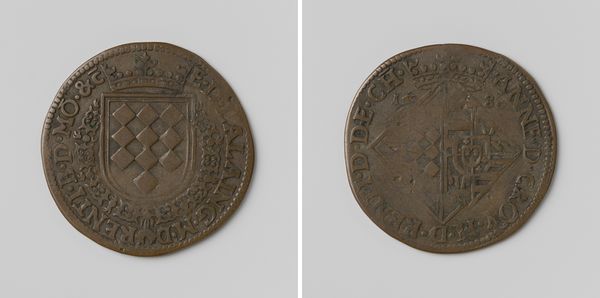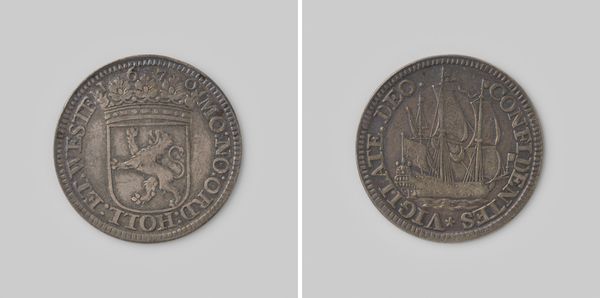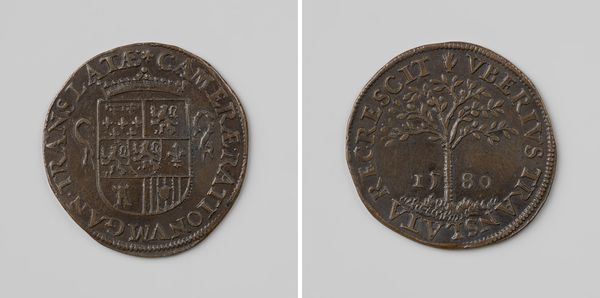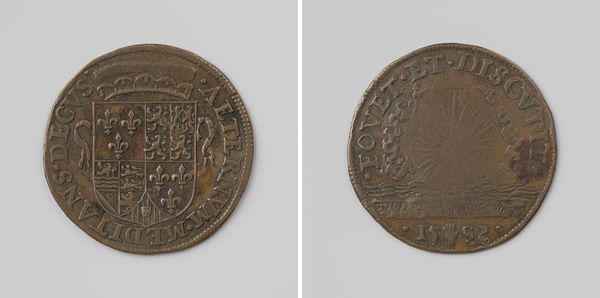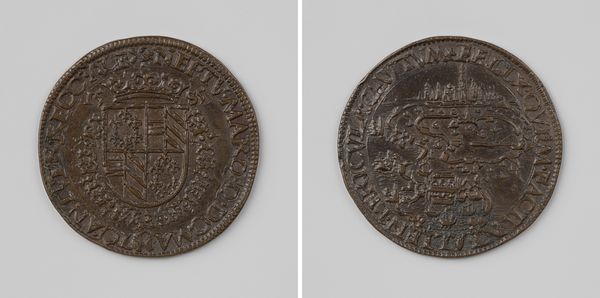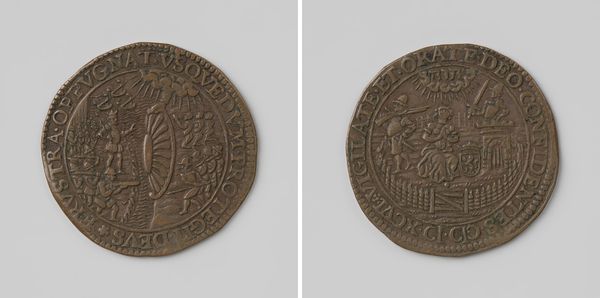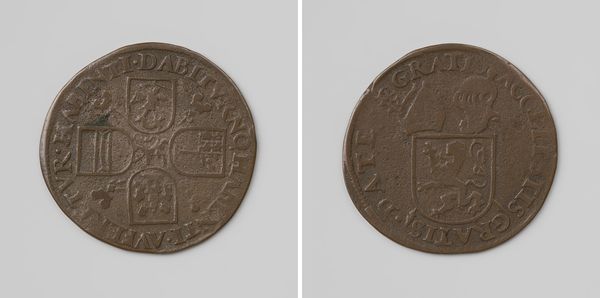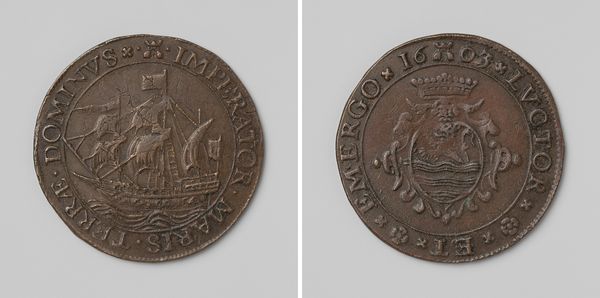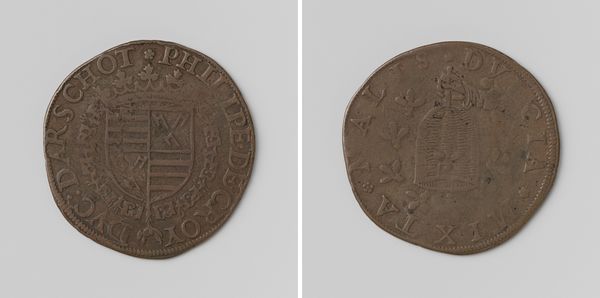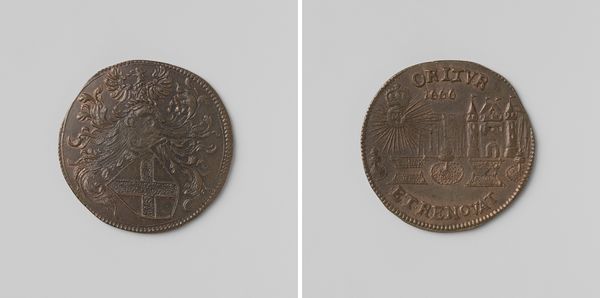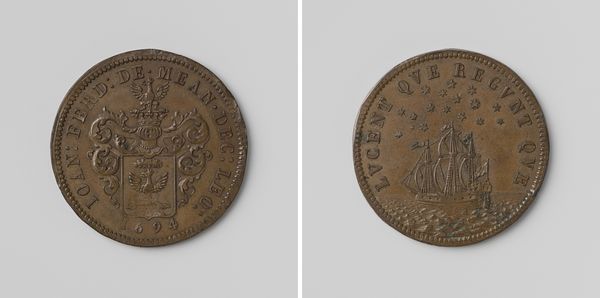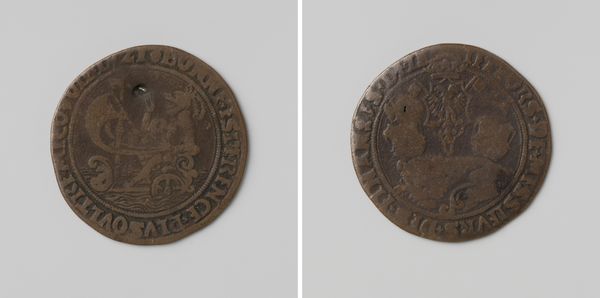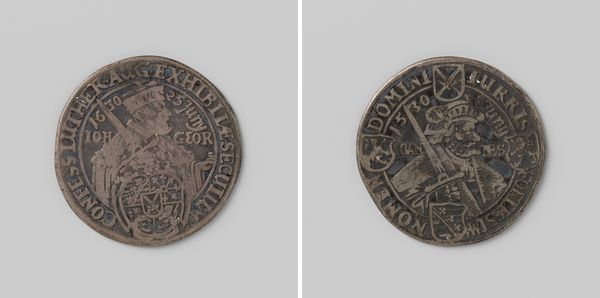
Rekenpenning van Symon Pyll, rekenmeester van Holland en Francine van der Mersche 1580
0:00
0:00
carving, metal, relief, sculpture
#
portrait
#
carving
#
metal
#
sculpture
#
relief
#
11_renaissance
#
sculpture
#
carved
Dimensions: diameter 3.1 cm, weight 7.29 gr
Copyright: Rijks Museum: Open Domain
This is a ‘rekenpenning’ or counting token, made in the Netherlands around 1580 by an anonymous maker. It's crafted from copper or bronze, and would have been struck from a die - a skilled process, requiring some degree of industrial organization. The token’s surface is finely detailed on both sides, with heraldic emblems and inscriptions. These motifs aren’t just decorative; they convey social status and the importance of financial transactions. In the 16th century, the burgeoning merchant class increasingly relied on such tokens for complex calculations. This one was likely made for Symon Pyll, an accountant from Holland, and Francine van der Mersche. The material itself is significant. Base metals like copper were the workhorses of early capitalism, essential for both everyday objects and specialized tools like this one. Its physical qualities – durability, malleability, and capacity for fine detail – made it perfect for this purpose. The act of minting these tokens reflects the increasing formalization of trade and labor during this period. Ultimately, this rekenpenning speaks volumes about the intersection of craft, commerce, and social identity in the early modern world. It is a reminder that even seemingly simple objects can be rich with cultural meaning.
Comments
No comments
Be the first to comment and join the conversation on the ultimate creative platform.
